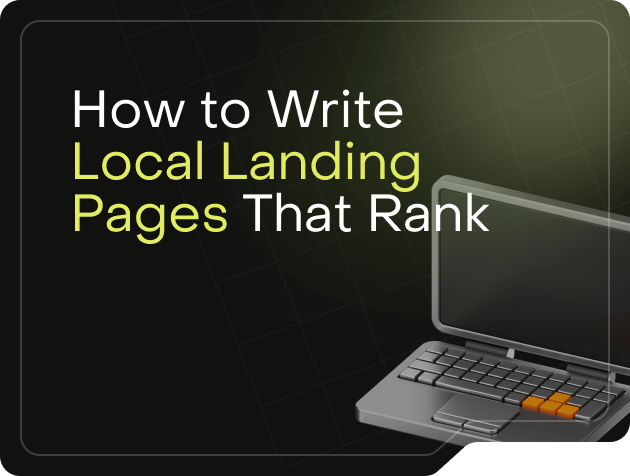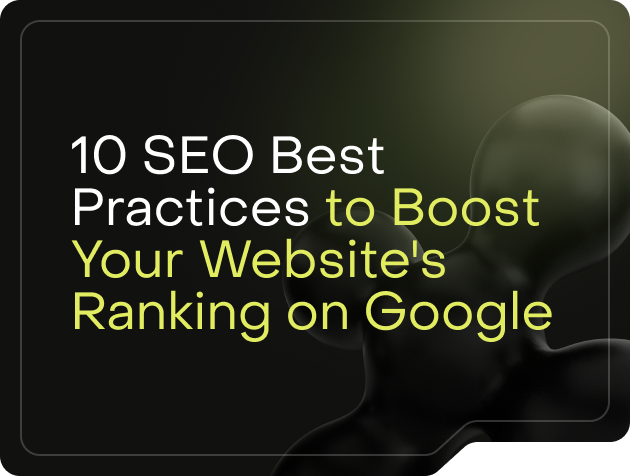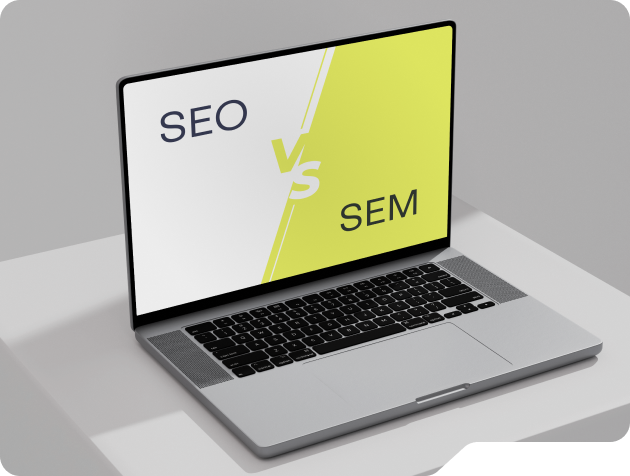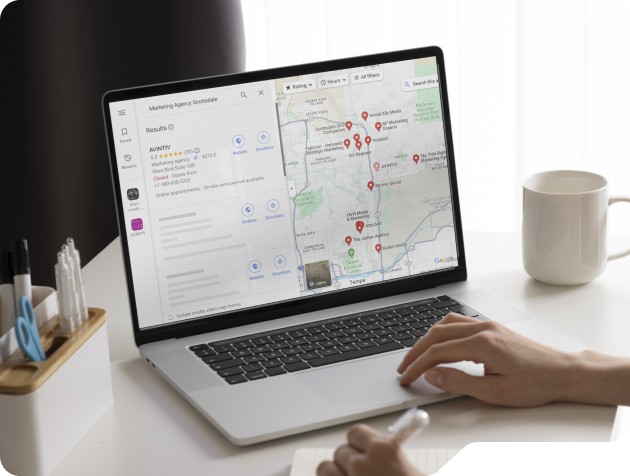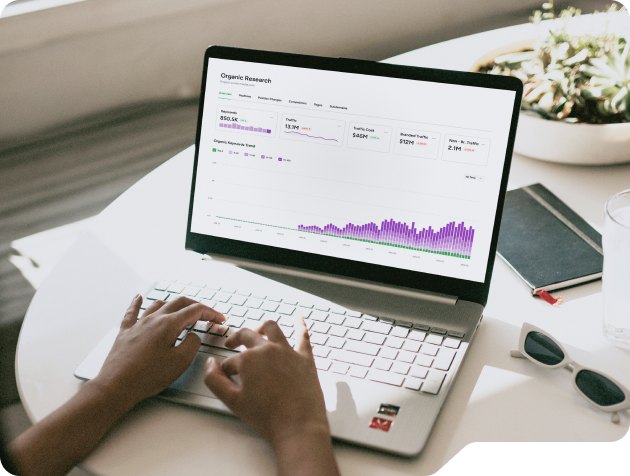For local businesses, ranking on Google is a make-or-break situation. If you’re not appearing in local search results, you’re losing customers to competitors who are. That’s where local landing pages come in.
These highly targeted pages can dramatically improve your visibility, drive hyper-local traffic, and convert visitors into paying customers.
In this post, we’ll break down how to structure, optimize, and scale local landing pages that produce real business growth.
Why Local Landing Pages Are Critical to Local SEO Performance
Today’s consumers rely on Google for nearly every stage of the buyer journey.
In fact, 40% of consumers visit Google when researching or planning a purchase they intend to make in a physical store, according to BrightLocal.
Additionally, 72% of consumers use Google to search for local business information.
That means if your business doesn’t appear in local search results, you’re invisible to a massive portion of your target audience. Local landing pages solve this problem by:
- Securing visibility in Google’s local pack and organic search
- Aligning content precisely with local search intent
- Establishing a stronger local authority with Google’s algorithm
- Driving higher conversion rates by answering hyper-local questions
Building local landing pages that truly perform requires more than simply adding keywords and location tags.
To achieve maximum visibility and conversion potential, each component must be carefully structured to send strong location signals, meet user intent, and support Google’s ranking factors.
The Anatomy of a High-Converting Local Landing Page
A successful local landing page does more than just exist. It sends clear, authoritative signals to both Google and your target audience.
Every element on the page must work together to prove your relevance to a specific geographic area, while also providing an excellent user experience that converts visitors into customers.
Hyper-Specific Page Titles and Meta Descriptions
Your page title and meta description are some of the first things a searcher sees. Use keyword + location combinations such as: “Miami HVAC Repair | 24/7 Emergency Service.”
Keep your meta descriptions (the text that appears after your title in search results) natural but optimized, incorporating relevant keywords while encouraging clicks.
Once your meta titles are dialed in, your headers need to reinforce your local relevance.
Targeted, Location-Optimized H1 and Header Structure
Your H1 title should always include the city and service, for example, “Las Vegas Orthodontics & Invisalign Specialist.”
Subheadings (H2s and H3s) should naturally incorporate related keywords to build semantic relevance for Google.
Optimized Content That Matches Local Search Intent
Each local landing page should contain highly relevant, unique content. Cover:
- Detailed service descriptions tailored to the location
- Common FAQs specific to that city or neighborhood
- Value propositions and pertinent differentiators to that market
Avoid writing too little or duplicating your content from page to page. Google will penalize pages that reuse identical text across locations.
NAP Consistency and Embedded Maps
Double-check that your Name, Address, and Phone (NAP) information on your landing page matches your Google Business Profile and citations exactly. Inconsistencies can occur when:
- The business name is slightly different across profiles (e.g., “AVINTIV Media” vs. “AVINTIV”)
- Multiple versions of your address exist (e.g., “123 N. Main St.” vs. “123 North Main Street”)
- Phone numbers vary between local listings and your website
- Outdated or duplicate listings remain active in online directories
Cleaning up these inconsistencies helps Google confidently associate your business with its correct service area. Embed a Google Map pinpointing your exact location to reinforce proximity signals.
Local Schema Markup for Enhanced SERP Features
Work with a developer to implement the LocalBusiness schema and any applicable service schemas.
Schema markup helps Google gain a better understanding of your business and enhances your chances of earning rich snippets in search results.
Internal Linking for SEO Authority Flow
Internal linking serves multiple purposes: it distributes SEO authority across your website, helps users navigate easily, and supports search engines in understanding your site architecture.
On your local landing pages, strategically link to:
- Core service pages that elaborate on specific offerings
- Related blog content that builds topical authority for your niche
- Contact or quote request pages customized for that particular location
By weaving these links into your content naturally, you not only enhance user experience but also strengthen the overall SEO value of your website.
Trust Builders: Reviews, Testimonials & Photos
Google heavily weighs trust signals. Strengthen your local landing pages by including:
- Embedded Google review feeds
- Location-specific testimonials
- High-quality images of your local office, team, or completed projects
The more trust you can build across every page of your website. The more customers you will attract.
The Mistakes That Sabotage Local Landing Page Performance
While the structure above may seem straightforward, many businesses still make costly mistakes, such as:
- Using duplicate or near-duplicate content across locations
- Keyword stuffing that compromises readability
- Failing to implement schema markup
- Neglecting mobile responsiveness
- Overlooking location-specific selling points unique to your area
When done right, local landing pages reinforce your broader authority signals, elevate your Google Business Profile performance, and contribute directly to long-term search engine trust and visibility.
How Local Landing Pages Fit Into Your Larger Local SEO Ecosystem
Local landing pages don’t work in isolation. They are integral to amplifying every other element of your local SEO strategy by providing Google with a clear, structured understanding of your business’s presence in each market you serve. Here’s why:
- Google Business Profile optimization becomes far more effective when tied to location-specific pages that validate your physical presence.
- Consistent citation profiles are strengthened by the NAP consistency displayed across your localized landing pages.
- Localized backlink acquisition gains relevance when external sites can link to specific, keyword-optimized pages for each service area.
- Reputation management is reinforced by embedding customer reviews directly onto these pages, allowing visitors (and search engines) to see proof of your expertise at the local level.
In short, local landing pages serve as the structured content foundation that anchors all your local SEO efforts and signals to Google exactly where and how your business delivers value.
Trust AVINTIV to Build Pages That Dominate Local Search and Drive Revenue
Local landing pages are no longer optional. They form the foundation of a high-performing local SEO strategy, helping businesses capture targeted traffic and convert it into meaningful revenue growth.
If any part of this process feels unfamiliar or overwhelming, you’re not alone. The details matter, and that’s where we come in.
Schedule your Local SEO Discovery Session with AVINTIV today, and let our team build a scalable local landing page system that drives measurable growth.
